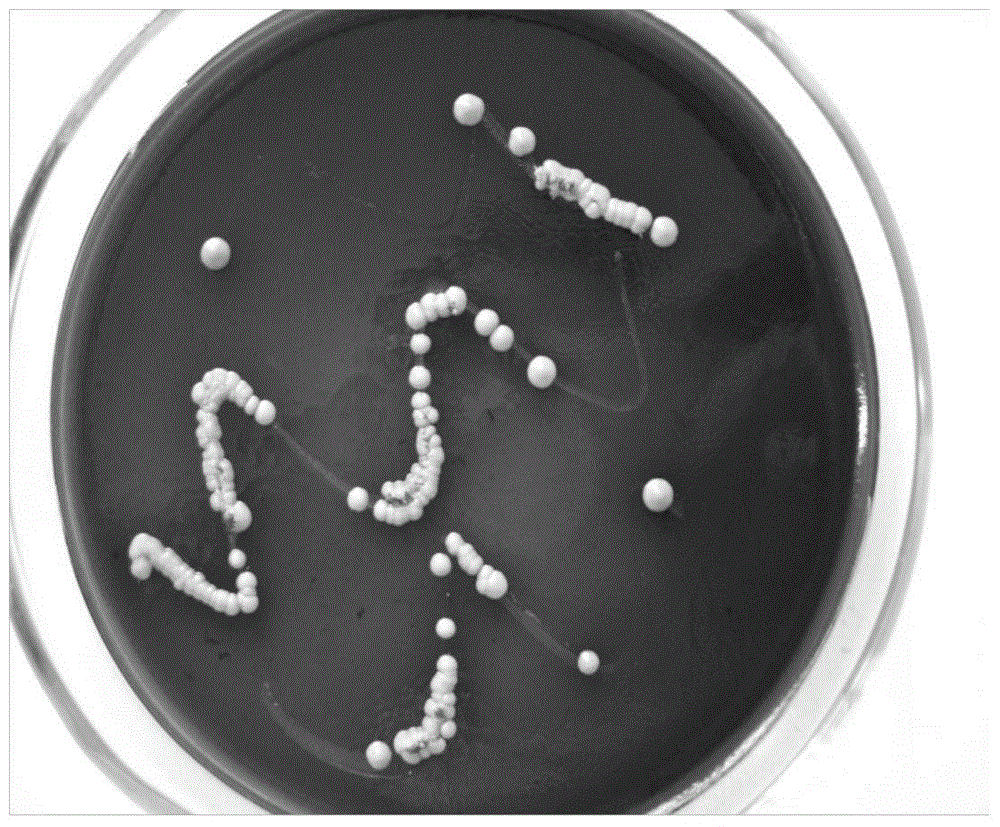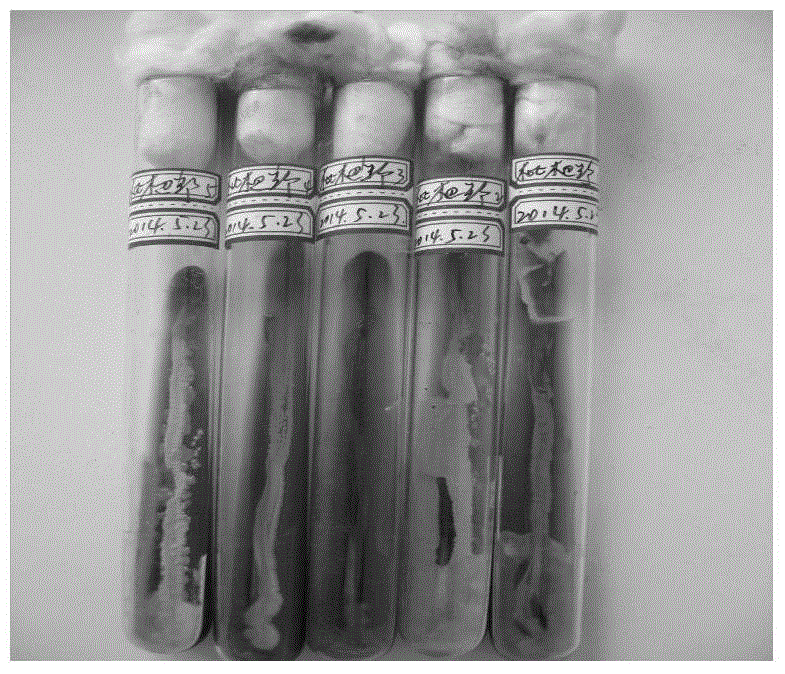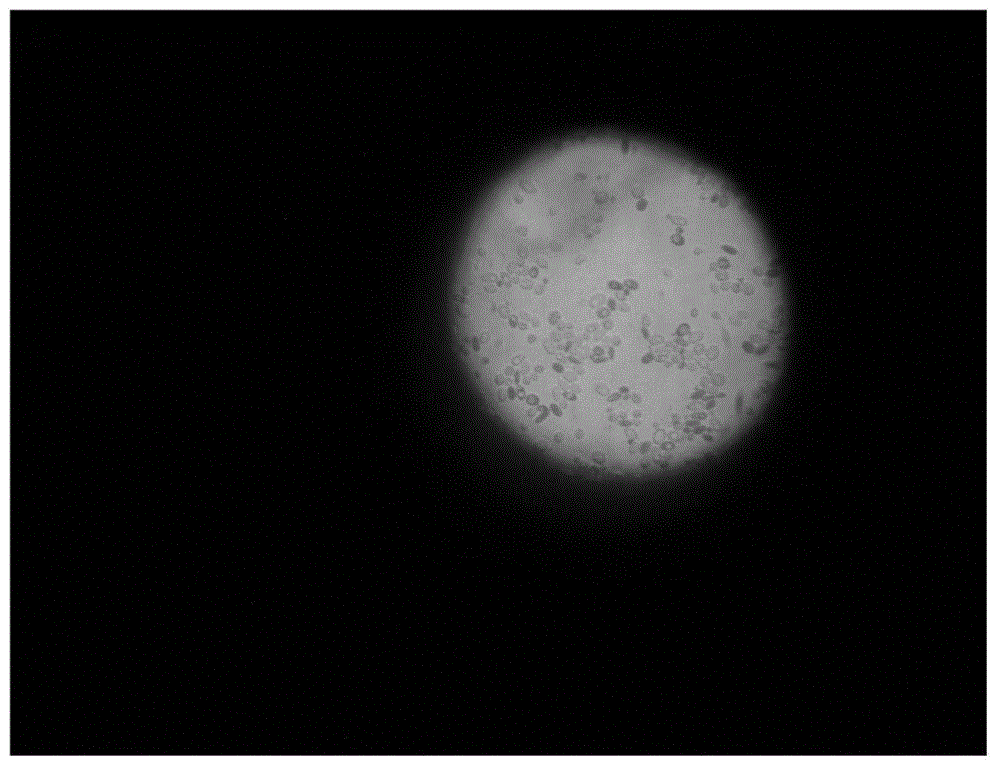Loquat Saccharomyces cerevisiae and its application
A technology of Saccharomyces cerevisiae and loquat wine, applied in the field of microbial engineering, can solve the problems of loquat fruit aroma, impure flavor, lack of specificity of yeast strains, etc., and achieve the effect of obvious hanging cup, long shelf life and full-bodied wine
- Summary
- Abstract
- Description
- Claims
- Application Information
AI Technical Summary
Problems solved by technology
Method used
Image
Examples
Embodiment 1
[0012] Example 1 Isolation and purification of loquat wild yeast
[0013] The fresh loquat fruit is crushed and multiplied and cultured for 48 hours under the condition of 28-30 DEG C to obtain a loquat wild yeast multiplication culture liquid with more individuals. Dilute the obtained proliferation culture solution with sterile distilled water according to seven concentration gradients of 10 times, 20 times, 40 times, 80 times, 160 times, 320 times and 640 times, and then smear them on the plate selection medium respectively (plate selection culture Base formula: 4°Bé fresh loquat pulp filtrate 24.5%, 4°Bé wort juice 24.5%, 4°Bé soybean juice 24.5%, 4°Bé potato juice 24.5%, agar 2%), the culture solution of each concentration gradient Do 4 flat plates, and use the "plate streaking method" to separate dozens of single-cell colonies of loquat wild yeast. According to the colony form, single-cell individual form, and growth of wild yeast unicellular colonies, five robust pure s...
Embodiment 2
[0014] Embodiment 2 Small-scale test of performance determination of loquat wild yeast pure strain
[0015] 1 Purpose of the test
[0016] The fermentation ability and wine production effect of five isolated wild loquat yeast strains were verified.
[0017] 2 Test materials and methods
[0018] 15 kg of fresh loquats, remove the core and rotten pulp and beat to obtain 11.52 kg of loquat slurry, which is divided into 6 test samples, and the amount of each test sample is 1.92 kg. Wherein 5 test samples are used in the 5 strains of loquat wild yeast in Example 1 as the experimental group, and the other 1 sample is used as the commercially available commodity "Anqi" wine high activity dry yeast (BV818) as the control. In each loquat slurry test sample, add 200 grams of sucrose, 11.1 grams of fresh bran yeast (the fresh bran yeast added in the experimental group is prepared by No. 1, 2, 3, 4, and No. 5 loquat wild yeast in embodiment 1 respectively Obtained, the fresh bran yeast...
Embodiment 3
[0022] Embodiment 3. The medium-scale test of the performance determination of loquat wild yeast pure strain
[0023] 1 Purpose of the test
[0024] The isolated loquat wild yeast carried out a medium-scale test on the basis of the small-scale test in order to further verify the performance of the wild yeast (color, flavor, wine production capacity, etc.).
[0025] 2 Test materials and methods
[0026] Get the fresh bran yeast prepared by No. 1, 2, 3, 4, No. 5 loquat wild yeast pure strains in Example 2 and mix in equal proportions, get 160 grams; 37.5 kilograms of loquat serum (50 kilograms of loquats make) ; 4.1 kilograms of sucrose; fully mixed and fermented at room temperature for 25 days. At the same time, "Anqi" wine high activity dry yeast (BV818) was used as a control.
[0027] 3 test results
[0028] After 25 days of fermentation at normal temperature, 3.55 kilograms of 53-degree distilled liquor were obtained, with a yield of 7.1%, and the wine-producing ability ...
PUM
 Login to View More
Login to View More Abstract
Description
Claims
Application Information
 Login to View More
Login to View More - R&D
- Intellectual Property
- Life Sciences
- Materials
- Tech Scout
- Unparalleled Data Quality
- Higher Quality Content
- 60% Fewer Hallucinations
Browse by: Latest US Patents, China's latest patents, Technical Efficacy Thesaurus, Application Domain, Technology Topic, Popular Technical Reports.
© 2025 PatSnap. All rights reserved.Legal|Privacy policy|Modern Slavery Act Transparency Statement|Sitemap|About US| Contact US: help@patsnap.com



